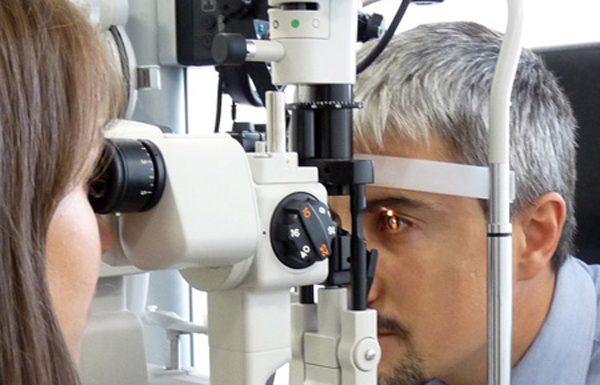
It is important that the lens of the eye is clear so that the light can pass well and then the image formed on the retina. Under normal circumstances, the eye lens is clear but cataract is a condition when the lens of the eye shows clouding. The clouding occurs gradually and can end up into blindness, if left untreated. Senile cataract is the one affecting older people whereas congenital cataract is a kind which is present at the time of birth itself. Traumatic cataracts are witnessed after an injury caused to eye and secondary cataract is the one which occurs due to any medical condition like diabetes. Cataract can affect one eye or both the eyes. There are a number of visual disturbances that might appear same as cataract. Hence, it becomes necessary that diabetic patients undergo routine screening. To differentiate cataract from other visual conditions, many diagnostic tests have been employed for detecting cataract.
Diagnosis
Factors like ability to read and drive and the extent of vision impairment determines, if the person under the radar has to undergo surgery or not. The severity of cataract is detected by eye examination and this might include one or more investigations and these are:
1. Visual acuity test
This test is same as normal routine test which is done for the entire life by an eye doctor. Snellen chart is the eye chart which tests each eye separately. A viewing device with letters in decreasing sizes can also be used for the same purpose. These methods depict that to what extent cataract has caused the damage.
2. Refraction test
The test is meant to check, if glasses are capable of correcting vision.
3. Contrast sensitivity testing
The test is more like the visual acuity test but the difference lies in the decreased image contrast which is the result of cataract and this is probably because of scattering of light due to cataract.
4. Glare testing
With different light conditions such as at night and in the abundant sunshine, a person with cataract shows altered vision. Such glare conditions can be checked with both bright and dark lighting conditions.
5. Color vision testing
Color vision defects can be detected in the people suffering from cataract.
6. Potential acuity testing
After the removal of cataract, this test provides the idea about the normal vision. It is the measurement of the vision, if the cataract condition is not present.
7. Slit-lamp examination
Slit-lamp is a special microscope which gives a 3D view of the interior portion of the eye. This enables the doctor to see the iris and lens in order to check the abnormalities that are present in the eye.
8. Retinal examination
Signs of cataract are detected which could be due to macular degeneration, glaucoma, etc.
9. Tonometry
Pressure within the eye is tested with a special microscope.
10. Spectacular photography microscopy
The picture of endothelial layer of cornea is taken by a specialized microscope which is done before cataract surgery.
Treatment
In the initial stages, the treatment is simple such as use of lenses and eyeglasses but in extreme cases, surgery is the only option.
1. Medication
Drug treatment is no cure to cataract. Mydriatic eye drops are effective in some cases but for a short span of time. This is generally prescribed for small children who are required to undergo surgery.
2. Surgery
Surgery is the only treatment that can cure cataract in an effective and proper manner so that the normal activities are not hindered due to impaired vision caused by cataract. This approach is very safe and effective. Suppose, the vision is not affected even if the cataract is detected then surgery is not required. When a convincing amount of vision is affected then the surgery can be done. Until this time, the surgery can be delayed or postponed.
At the course of your surgery, the cloudy lens is removed safely and this is then replaced with an artificial lens. In case both the eyes have impaired vision, one eye is treated at a time and the other is treated after a gap of 4-8 weeks. Phacoemulsification is the most common process of removing cataract which does not take more than 30 minutes of time. The particles are taken off by suction. Extracapsular cataract surgery is the other method in which the whole cloudy lens is removed. Intracapsular cataract surgery is not opted these days. In this, the lens is removed along with the capsule. Intra- and extracapsular surgeries take longer as compared to the phacoemulsification process.




